Grand Central Terminal
42nd Street at Park Avenue
Manhattan
Natural History special issue
Part of City of Stars photo essay.
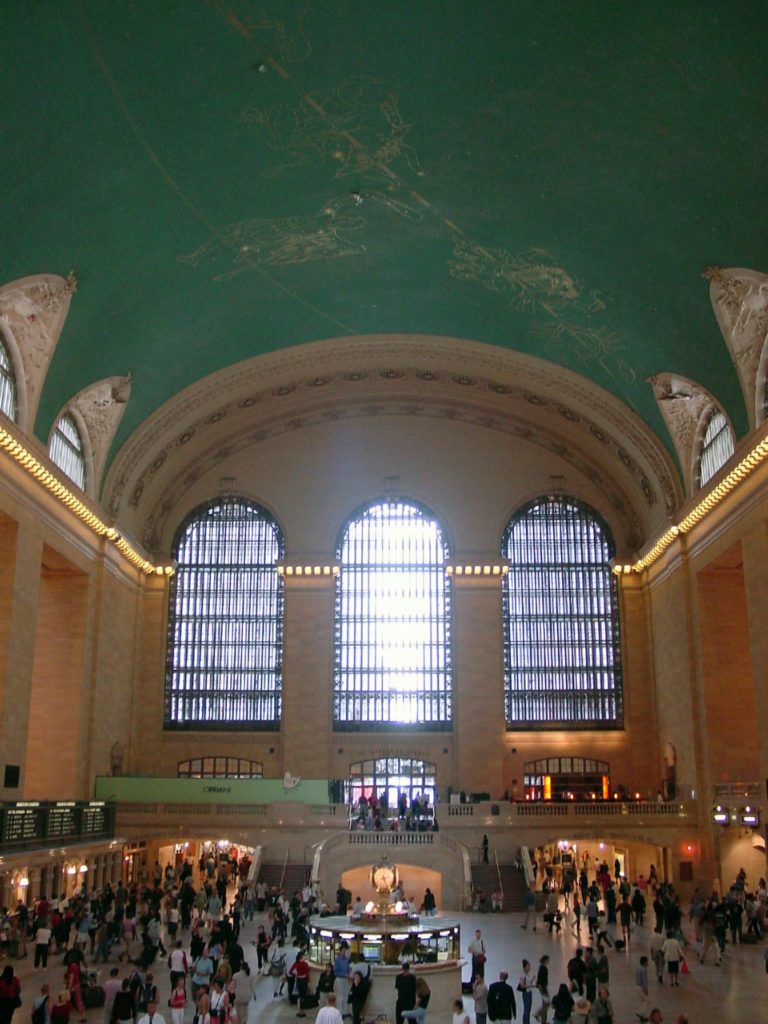
Those hurried commuters who take a moment to look up might notice an expansive night sky that graces the entire ceiling of Grand Central Terminal’s main concourse. Several famous constellations are illustrated, such as Orion (the hunter) and the winged steed Pegasus. These live alongside a majestic menagerie of zodiacal constellations that extends across the length of the terminal ceiling. The representations of the brighter stars, such as Betelgeuse and Aldebaran, are lit electronically, making them easier to see from the floor.
All this is well and good—except that the ceiling displays some oddities that force me to question the scientific literacy of its designer. Why is the background sky not dark blue, or black, but a shade of green reminiscent of Sears appliances and linoleum tabletops of the 1950s? I suppose that, after a while, one could grow accustomed to such a color, but then why are all the constellations depicted backward? While the ceiling was cleaned in the late 1990s, a plaque was posted to try to explain away these transgressions: “Grand Central Station’s famous zodiac ceiling depicts a Mediterranean winter sky with 2,500 stars. Said to be backwards, it’s actually seen from a point of view outside our solar system.”
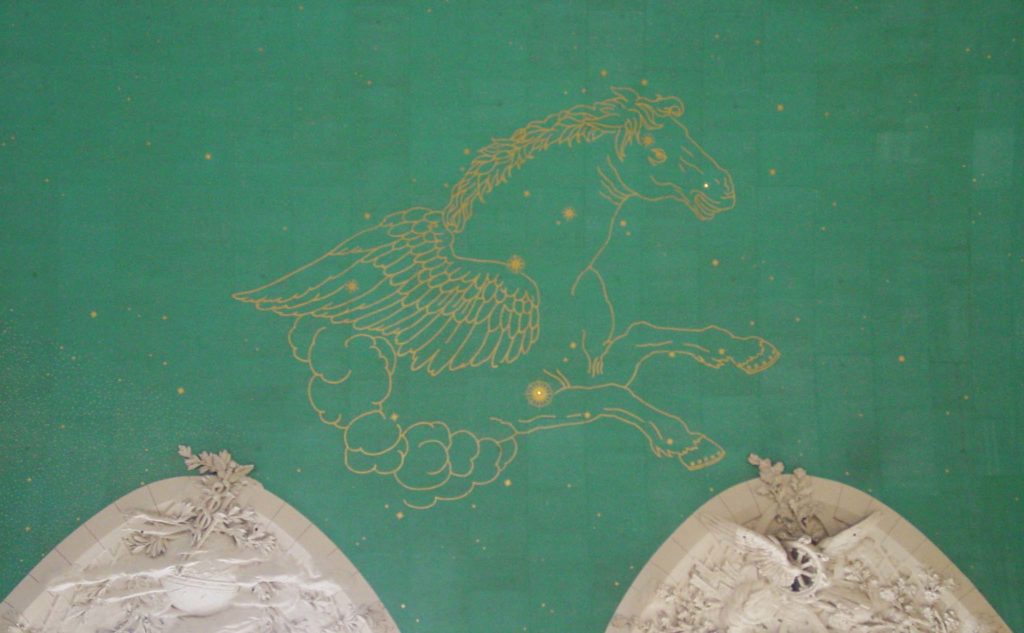
What they do not tell you is that the “Mediterranean” sky (for any season) is the same as that for all places on Earth at 35° north latitude—Lubbock, Texas, for instance. Also, the nearest star system to the Sun, Alpha Centauri, is 6,700 times farther from Earth as Pluto is. So just leaving the solar system is a short trip that will not fundamentally alter your view of the stars in our galaxy, and it certainly does not allow you to look at the constellations from behind.
In spite of these basic blunders, the Grand Central sky remains a majestic reminder of a sky obscured to urban dwellers by city lights.
Hermes, Grand Central Façade
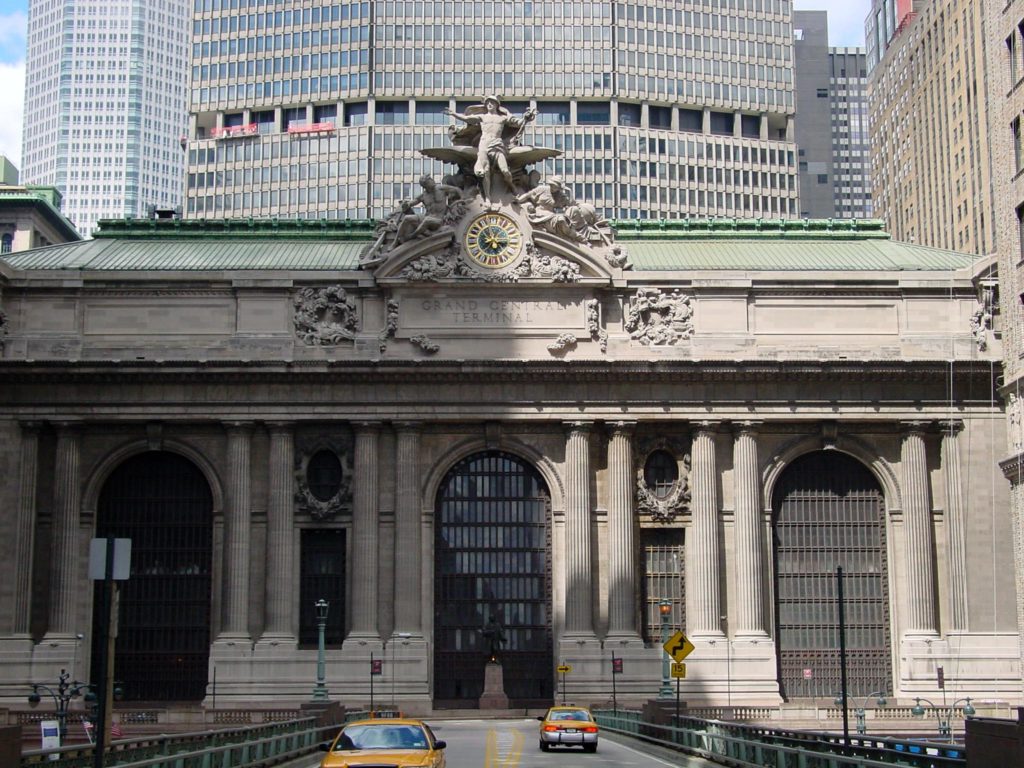
A statue of the Greek god Hermes stands atop the clock on the main façade of the Grand Central Terminal. His winged hat betrays his vocation as the speedy messenger to the gods—making him a fine icon for a center of transportation. Mercury, Hermes’s Roman counterpart, is now forever associated with the innermost planet of the solar system. At a speed of thirty miles per second, Mercury moves faster through space than does any other planet, a fact that did not go unnoticed by the Romans.
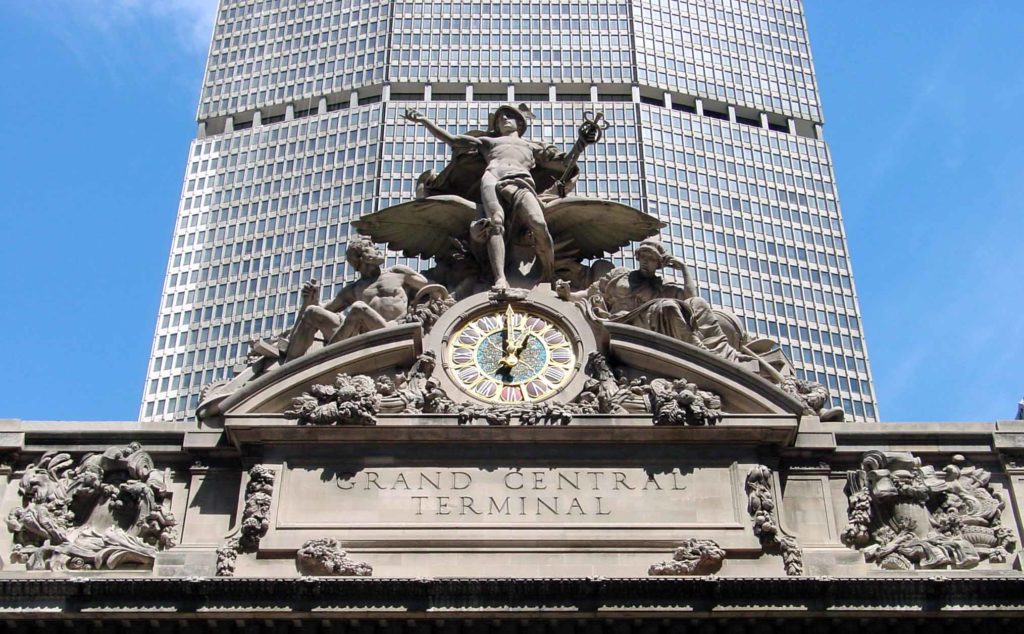
Pinhole Suns
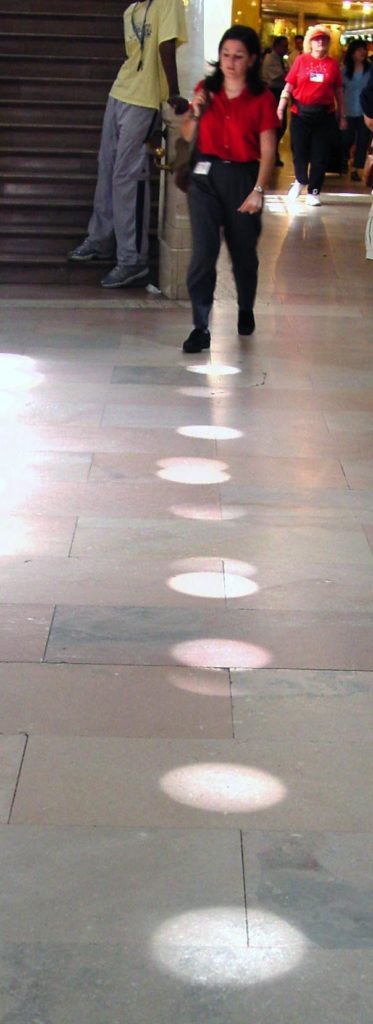
High above Grand Central Terminal’s main waiting room, small holes in the iron grillwork that covers the south-facing windows allow sunlight to pass through. When the Sun’s position in the sky aligns with these holes, its focused image projects onto the floor of the main concourse, turning the entire space into a jumbo pinhole camera. This cosmic alignment happens at approximately the same time every cloudless day, allowing alert, downward-looking commuters to track the Sun’s thirty-day rotation rate day by day as sunspot groups move across its surface. Of course, some commuters will be looking up at the ceiling and will miss it. But that’s okay.
Compass Rose
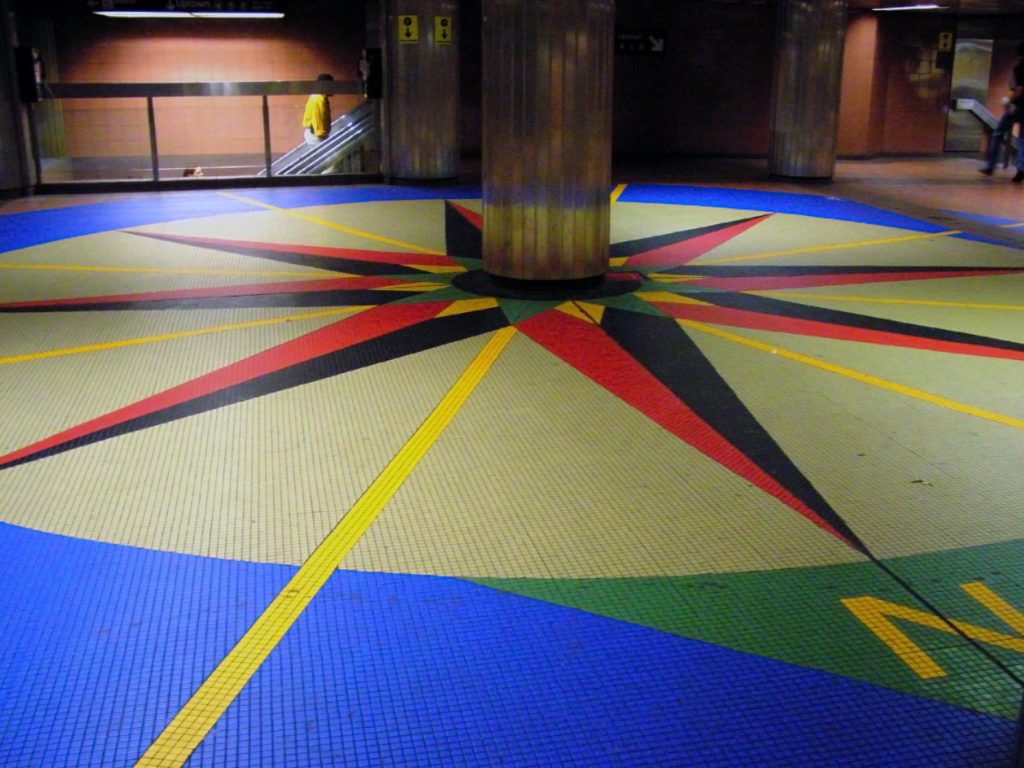
The numbered street grid of Manhattan is rotated by 30° from Earth’s cardinal directions. If you walked due north, as instructed by a compass, you would consistently bump into buildings. I believe that for this reason, compass roses are rare in Manhattan. They are visual curiosities, silently alerting passers-by what direction they are headed on Earth’s surface. Onke such compass rose may be found on the upper level of the 42nd street, Grand Central Terminal subway platform. The space is cramped, with low ceilings, but the compass is seen, or at least trammeled upon, by tens of thousands of people per day.

